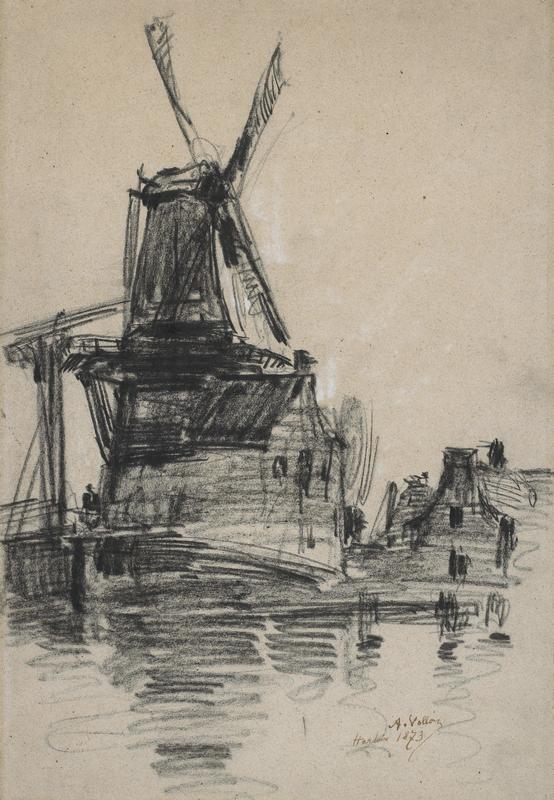
186. Antoine Vollon, Windmill in Haarlem
| Artist | Antoine Vollon, French, Lyon, Rhône-Alpes 1833–Paris 1900 |
| Title, Date | Windmill in Haarlem, 1873 |
| Medium | Black and white chalk on gray paper |
| Dimensions | 12 13/16 × 18 3/4 in. (32.5 × 47.6 cm) |
| Inscriptions + Marks | Lower right: Ha[a]rlem / A. Vollon / 1873 |
| Provenance | [Neal Fiertag, Paris; to Weisberg]; Yvonne and Gabriel Weisberg, Minneapolis |
| Exhibition History | "The Quieter Image: 19th Century European Drawings and Watercolors," Carleton Art Gallery, Carleton College, Northfield, Minn., 1996, no. 42; "Expanding the Boundaries: Selected Drawings from the Yvonne and Gabriel P. Weisberg Collection," Mia (2008) and Snite Museum of Art, Notre Dame, Ind. (2010); "Reflections on Reality: Drawings and Paintings from the Weisberg Collection," Mia, 2022–23 |
| References | Lisa Dickinson Michaux with Gabriel P. Weisberg, "Expanding the Boundaries: Selected Drawings from the Yvonne and Gabriel P. Weisberg Collection" (exh. cat.), Minneapolis Institute of Arts (Minneapolis, 2008), pp. 72–74, fig. 42 |
| Credit Line | Promised gift of Gabriel P. and Yvonne M.L. Weisberg, Minneapolis |
Antoine Vollon may have acquired his taste for seventeenth-century Dutch art from his teacher, Théodule Ribot, who is also represented in the Weisberg Collection. Vollon made many still-lifes and landscapes inspired by Dutch paintings, executing them in a lavish style inflected by the work of his contemporaries. He became a regular visitor to historically important artistic centers in Belgium and the Netherlands, including Haarlem, Amsterdam, and Antwerp. Along the way, he made quick studies of features that caught his eye, such as this windmill. He sometimes would note when and where he made the studies, as here. These sketches could have served as preparation for larger oil paintings or simply as independent works that helped familiarize Vollon with the waterways, architecture, and traditions of the Low Countries.
GPW